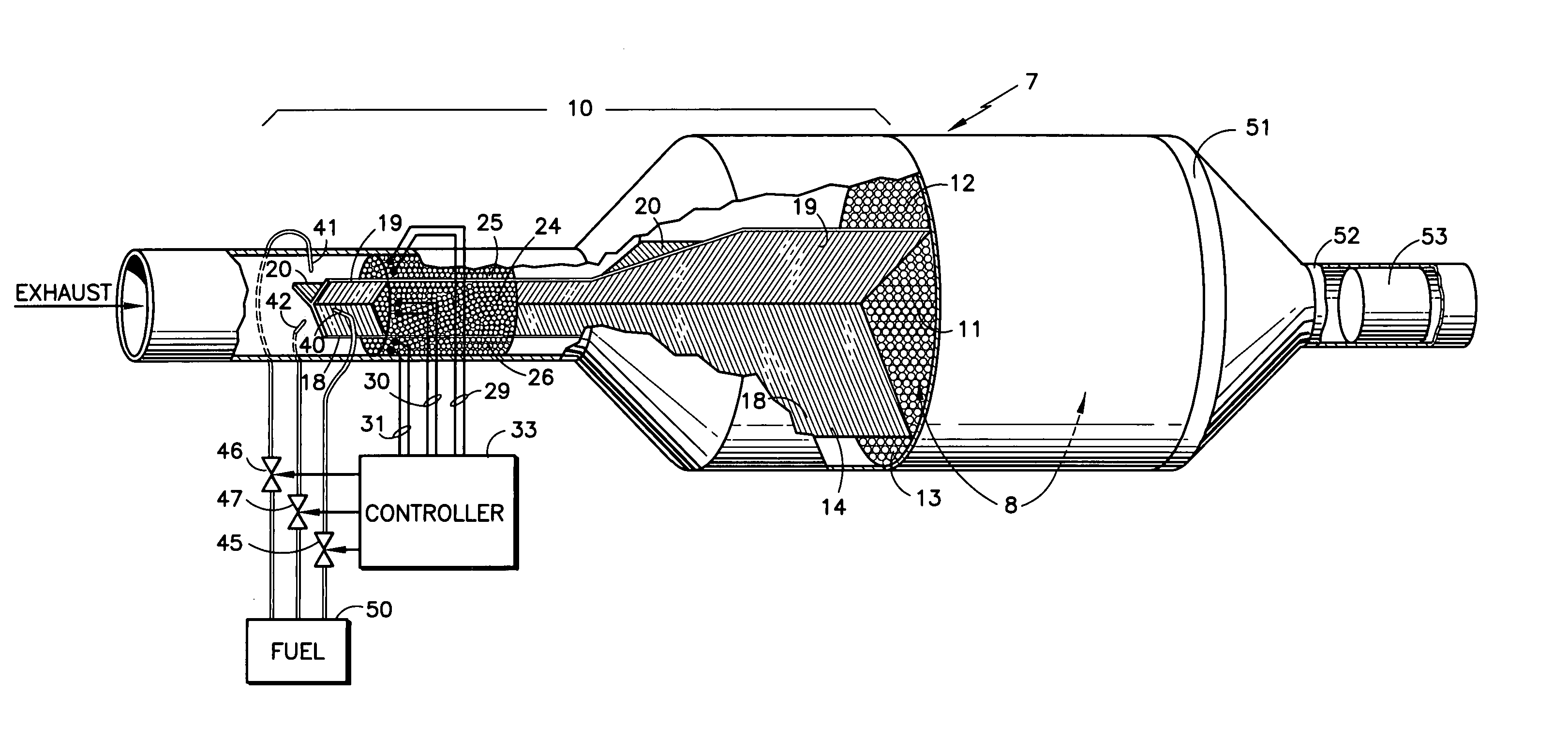CPO regenerated lean NOx trap with no moving parts
a technology of nox traps and moving parts, which is applied in the direction of engines, mechanical equipment, machines/engines, etc., can solve the problems of significant significant waste of fuel, and inability to operate without leakage of high-temperature exhaust valves, so as to reduce the size and complexity of nox-reducing equipment for engine exhaust, avoid waste of regeneration gas, and improve the effect of nox to nitrogen reduction
- Summary
- Abstract
- Description
- Claims
- Application Information
AI Technical Summary
Benefits of technology
Problems solved by technology
Method used
Image
Examples
Embodiment Construction
[0011]Referring to the FIGURE, a static LNT deNOx system 7 has a single lean deNOx catalyst 8, such as barium carbonate on cordierite support, having an inlet manifold 10 which is divided into three zones 11–13 by baffles 18–20. Between the baffles 18–20, there are conventional diesel particulate filters 14 (not shown for clarity), which may comprise cordierite or silicon carbide. Each zone has a partial oxidation catalyst 24–26, such as platinum or other noble metal or alloy. At the upstream end of each catalyst 24–26, there is disposed an electric heater element (not shown) which is energized by corresponding sets of wires 29–31 in response to a controller 33.
[0012]Each of the zones has a fuel injection nozzle, each connected by a corresponding pipe 40–42 to a corresponding valve 45–47 which supplies fuel from a source 50, such as the on-board primary fuel tank of the internal combustion engine.
[0013]The controller 33, may, for example, energize the wires 29 to energize the heater...
PUM
 Login to View More
Login to View More Abstract
Description
Claims
Application Information
 Login to View More
Login to View More - R&D
- Intellectual Property
- Life Sciences
- Materials
- Tech Scout
- Unparalleled Data Quality
- Higher Quality Content
- 60% Fewer Hallucinations
Browse by: Latest US Patents, China's latest patents, Technical Efficacy Thesaurus, Application Domain, Technology Topic, Popular Technical Reports.
© 2025 PatSnap. All rights reserved.Legal|Privacy policy|Modern Slavery Act Transparency Statement|Sitemap|About US| Contact US: help@patsnap.com


